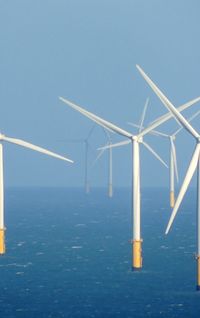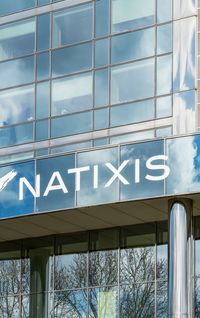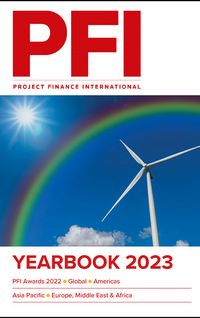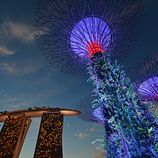After the signing of nine framework agreements at COP27, questions around the potential offtake and bankability of the projects involved are starting to be answered. By Gajendra Yadav, Synergy Consulting.
Known as both "The implementation COP" and "The Africa COP", COP27 was much like previous editions in the mixed response that followed the event. One country stood out, however. Egypt, the host, was largely applauded for the ambition of its National Green Hydrogen Strategy, formally launched during the talks.
The host government signed eight framework agreements to develop green hydrogen and ammonia projects as part of a plan to become a hub for hydrogen production and secure 5% of the global market by 2040.
The total investment cost of the plan has been estimated at US$83bn and agreements were signed with some of the world’s most well-known power developers: AMEA Power, Alfanar, TotalEnergies, Globeleq, EDF, Fortescue Future Industries (FFI), ReNew and Scatec.
Most of the projects are to be located around the Red Sea port of Ain Sokhna. The Suez Canal Economic Zone and Egypt’s position at the crossroads of Africa, Europe, and Asia, with more than a tenth of global trade flowing through the Suez Canal, gives it a significant head-start in realising the plan.
But there are challenges too – not least how private partners structure the large-scale financing required, taking account of a nascent offtake market and a host of other government priorities too.
Counterparties convene
Egyptian counterparties to the framework agreements involve The Sovereign Fund of Egypt’s Infrastructure & Utilities Subfund, the New and Renewable Energy Authority, the Egyptian Electricity Transmission Company, and The General Authority for the Suez Canal Economic Zone.
The private-sector partners will carry out the project and site studies in the coming months, making final investment decisions as early as this year and concluding by mid-2024.
Financing details are still under discussion, but it is expected that the agreed projects will be delivered on a develop, finance, build, own and operate basis, and aim to raise funds using a project finance framework.
According to Egypt’s hydrogen strategy document, the offtake for the projects will be based on projected global demand for green ammonia and methanol for use as marine fuels, in co-firing, for energy exports, and in road or rail transport sectors. Egypt is currently the sixth-largest exporter of ammonia as a fertiliser globally but is focused on "grey" rather than "green" ammonia.
Incremental demand for low-carbon "green" ammonia is estimated to grow to more than 8 million tonnes by 2030 compared with a current global merchant ammonia market of approximately 200 million metric tonnes.
Europe’s new levy on "grey" ammonia – expected to come in anywhere between €90 and €120 per tonne – will make the projects in Egypt more attractive to European offtakers. Governments here and elsewhere could also provide grants to national or state-owned offtakers to further enhance the financing structure.
In Asia, governments are repositioning coal fleets to burn ammonia, which does not release carbon dioxide when burned, making it an alternative to fossil fuels and driving demand for projects like those signed in Egypt.
Last year, Japan’s largest power generator JERA began adding small amounts of ammonia to a 1GW unit as part of a plan to achieve a 20% ammonia co-firing by 2025. New levels could go as high as 50% by 2029 and require imports of up to 500,000 tonnes of ammonia a year starting in 2027. South Korea’s Ministry of Trade, Industry and Energy has also said that ammonia coal co-combustion will be operational in over half the country’s coal-fired power generating units by 2030.
In Germany, steelmakers and the chemical industry, such as world leader BASF, will need hydrogen. “We are adapting our plans for domestic production of green hydrogen from five gigawatts to ten gigawatts of electrolyser capacity by 2030,” said German Chancellor Olaf Scholz in Egypt in November. “This will only meet one-third of the expected demand. The majority needs to come from abroad.”
US-based H2-Industries, which is developing the world’s first waste-to-hydrogen plant in Egypt, recently said it could produce green hydrogen at a cost of US$2–$3 per kilogramme (kg) by 2026 and at less than US$1 per kg by 2030. International Energy Agency (IEA) pegs the current cost of renewable hydrogen at US$3–$8 per kg. H2’s CEO has echoed the words of Scholz, saying that producers, suppliers and potential offtakers are starting to enter into preliminary agreements to secure volumes, as the projected global demand for clean hydrogen in the years to come is far bigger than the projected supply capacity.
Potential offtakers considered as part of Egypt’s new hydrogen plans include Yara – the world's second largest ammonia producer with the world's largest export and trading network, Danish shipping giant Maersk, and Germany’s Uniper.
Financing structure
If the new green hydrogen projects signed in Egypt can secure offtake and involvement from JERA, KEPCO or POSCO, export credit agencies (ECAs) in these Asian countries – from KEXIM, South Korea, to NEXI, Japan – could enter the financing and carry a significant share of the debt burden. ECA insurance would support a commercial bank tranche, while World Bank MIGA insurance could be used to protect the sponsor equity.
In some cases, project partners already involved can act as both developer and offtaker. On the Scatec project, the world's largest export-focused nitrogen fertiliser platform Fertiglobe – a partnership between OCI and Abu Dhabi National Oil Company (ADNOC) – will jointly develop the 50MW–100MW electrolyser facility to produce green hydrogen as feedstock for green ammonia production. The European Bank for Reconstruction and Development (EBRD) is providing a €80m loan for the project and the development lender said in November that it will continue to be one of Egypt’s key partners on its renewable energy journey.
AMEA Power will develop a 1,000MW green hydrogen project for the production of green ammonia, located in Egypt’s Suez Governorate, with the capacity to produce 800,000 tonnes of green ammonia a year for domestic use and export.
The EDF project is based on a mix of over 2GW wind and solar renewable energy to be implemented in phases and aims to power a 700MW electrolyser to produce green hydrogen and ammonia. The first phase of the project will generate about 22,000 tonnes of green hydrogen per year for ammonia synthesis and is scheduled to be operational by 2026.
According to the framework agreement signed at COP27, the project will scale up total green hydrogen production capacity by reaching 80,000 tonnes per year by 2030. EDF has a US$3bn agreement with Egyptian company Zero Waste to develop a green hydrogen megaproject in Ain Sokhna on the Red Sea that will produce up to 350,000 tonnes of green fuel annually for ships passing through the Suez Canal. EDF is believed to be supported by Masdar on the framework agreement.
Globeleq’s project will be developed over 12 years in three phases, totalling 3.6GW of electrolysers powered by up to 9GW of solar PV and wind energy. The first phase will involve a pilot project that will produce 100,000 tonnes pa of green ammonia from hydrogen and will start operations by 2026–27
ReNew’s pilot electrolysis plant is expected to produce 20,000 tonnes of green hydrogen annually. For the next phase, the annual output of the plant will be raised by up to 200,000 tonnes of green hydrogen, bringing total production to 220,000 tonnes. The project is one of the largest with an estimated investment cost of US$8bn.
Egypt’s role
Egypt’s government is not expected to provide any form of sovereign guarantee to the projects involved – as, unlike the renewable energy schemes in the country, it is not directly involved in the offtake. Nevertheless, the country will play a key support role in many other ways.
Egypt’s sovereign wealth fund has been an active coordinator in the framework agreements and is expected to invest minority shares in the project financing. It is expected to invest about US$15m in Egypt’s first operational green hydrogen project, a 100MW plant in Ain Sokhna on the western shore of the Gulf of Suez, due to come online by the end of 2023, and has said publicly it could invest US$225m in total over the next two years.
Yet although it has played a key role in studying investment opportunities and working with the private sector, it has limited financial firepower currently. It runs a portfolio of about US$1bn in assets under management, and is expected to grow this to US$2bn this year. Nevertheless, any equity it provides will offer credibility and soft comfort to project lenders.
Egypt’s government has further influence over the green hydrogen projects through the possible provision of tax or regulatory incentives – particularly where neighbouring governments have done the same.
Egypt can also have a role in ensuring project sites are shovel-ready with viable grid connections and transport corridors available for export, and there is adequate long-term supply of water and renewable energy in the country.
Since 2014, Egypt has initiated plans and structural reforms to expand renewable energy and increase its contribution to solar and wind energy generation efforts. This is expected to continue. Egypt has allocated land sufficient to generate renewable capacity of up to 77GW but produces less than 10GW of renewable energy currently. It wants to increase its own share of renewable energy use to 42% by 2035 from around 20% now.
Egypt and Saudi Arabia are also implementing a project to exchange power between the two countries, and an agreement has been signed to invest Saudi capital in establishing renewable energy plants capable of producing 1,100MW. In terms of water supply, following the COP27 event, Egypt announced its intention to build 21 new desalination plants in the first step of a larger plan. This initial phase has been allocated US$3bn in funds.
The praise for Egypt’s ambitious hydrogen plan is much deserved but its role in seeing through these projects, indirectly or otherwise, is only just beginning.
Disclaimer: Egyptian government signed a framework agreement with Masdar, Hassan Allam Utilities, and Infinity Power Consortium as well in addition to eight entities named above."
To see the digital version of this report, please click here
To purchase printed copies or a PDF of this report, please email leonie.welss@lseg.com

















